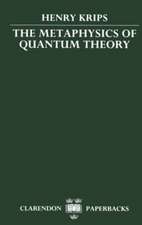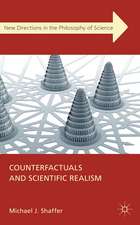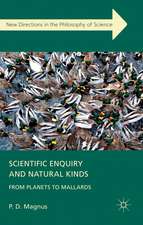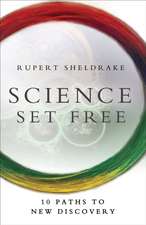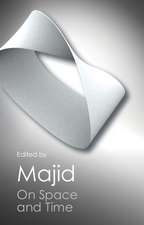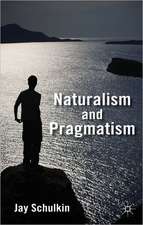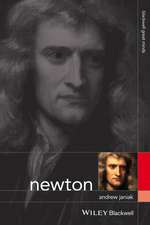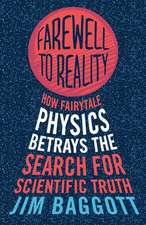Reconstructing Scientific Revolutions: Thomas S. Kuhn's Philosophy of Science
Autor Paul Hoyningen-Huene Traducere de Alex Levineen Limba Engleză Paperback – 28 feb 1993
Few philosophers of science have influenced as many readers as Thomas S. Kuhn. Yet no comprehensive study of his ideas has existed—until now. In this volume, Paul Hoyningen-Huene examines Kuhn's work over four decades, from the days before The Structure of Scientific Revolutions to the present, and puts Kuhn's philosophical development in a historical framework.
Scholars from disciplines as diverse as political science and art history have offered widely differing interpretations of Kuhn's ideas, appropriating his notions of paradigm shifts and revolutions to fit their own theories, however imperfectly. Hoyningen-Huene does not merely offer another interpretation—he brings Kuhn's work into focus with rigorous philosophical analysis. Through extended discussions with Kuhn and an encyclopedic reading of his work, Hoyningen-Huene looks at the problems and justifications of his claims and determines how his theories might be expanded. Most significantly, he discovers that The Structure of Scientific Revolutions can be understood only with reference to the historiographic foundation of Kuhn's philosophy.
Discussing the concepts of paradigms, paradigm shifts, normal science, and scientific revolutions, Hoyningen-Huene traces their evolution to Kuhn's experience as a historian of contemporary science. From here, Hoyningen-Huene examines Kuhn's well-known thesis that scientists on opposite sides of a revolutionary divide "work in different worlds," explaining Kuhn's notion of a world-change during a scientific revolution. He even considers Kuhn's most controversial claims—his attack on the distinction between the contexts of discovery and justification and his notion of incommensurability—addressing both criticisms and defenses of these ideas.
Destined to become the authoritative philosophical study of Kuhn's work, Reconstructing Scientific Revolutions both enriches our understanding of Kuhn and provides powerful interpretive tools for bridging Continental and Anglo-American philosophical traditions.
Scholars from disciplines as diverse as political science and art history have offered widely differing interpretations of Kuhn's ideas, appropriating his notions of paradigm shifts and revolutions to fit their own theories, however imperfectly. Hoyningen-Huene does not merely offer another interpretation—he brings Kuhn's work into focus with rigorous philosophical analysis. Through extended discussions with Kuhn and an encyclopedic reading of his work, Hoyningen-Huene looks at the problems and justifications of his claims and determines how his theories might be expanded. Most significantly, he discovers that The Structure of Scientific Revolutions can be understood only with reference to the historiographic foundation of Kuhn's philosophy.
Discussing the concepts of paradigms, paradigm shifts, normal science, and scientific revolutions, Hoyningen-Huene traces their evolution to Kuhn's experience as a historian of contemporary science. From here, Hoyningen-Huene examines Kuhn's well-known thesis that scientists on opposite sides of a revolutionary divide "work in different worlds," explaining Kuhn's notion of a world-change during a scientific revolution. He even considers Kuhn's most controversial claims—his attack on the distinction between the contexts of discovery and justification and his notion of incommensurability—addressing both criticisms and defenses of these ideas.
Destined to become the authoritative philosophical study of Kuhn's work, Reconstructing Scientific Revolutions both enriches our understanding of Kuhn and provides powerful interpretive tools for bridging Continental and Anglo-American philosophical traditions.
Preț: 292.46 lei
Nou
Puncte Express: 439
Preț estimativ în valută:
55.96€ • 58.59$ • 46.30£
55.96€ • 58.59$ • 46.30£
Carte tipărită la comandă
Livrare economică 05-19 aprilie
Preluare comenzi: 021 569.72.76
Specificații
ISBN-13: 9780226355511
ISBN-10: 0226355519
Pagini: 330
Ilustrații: black & white illustrations
Dimensiuni: 152 x 229 x 23 mm
Greutate: 0.46 kg
Ediția:1
Editura: University of Chicago Press
Colecția University of Chicago Press
ISBN-10: 0226355519
Pagini: 330
Ilustrații: black & white illustrations
Dimensiuni: 152 x 229 x 23 mm
Greutate: 0.46 kg
Ediția:1
Editura: University of Chicago Press
Colecția University of Chicago Press
Cuprins
Translator's Note
Foreword
Preface
Part I - Introduction
Chapter One - The Topic of Kuhn's Philosophy of Science
1.1. The Issue: Scientific Development
a. The Total Domain of Science
b. Permissible Units of Analysis within the Domain of Science
1.2. The Construction of the Target Issue: The Historiography of Science
a. The Old Internal Historiography of Science
b. The Critique of the Old Internal Historiography of Science
c. The New Internal Historiography of Science
Foreword
Preface
Part I - Introduction
Chapter One - The Topic of Kuhn's Philosophy of Science
1.1. The Issue: Scientific Development
a. The Total Domain of Science
b. Permissible Units of Analysis within the Domain of Science
1.2. The Construction of the Target Issue: The Historiography of Science
a. The Old Internal Historiography of Science
b. The Critique of the Old Internal Historiography of Science
c. The New Internal Historiography of Science
1.3. The Focus: Structure
Summary of Part I
Summary of Part I
Part II - Scientific Knowledge and Its Object
Chapter Two - The World Concept
2.1. The Double Meaning of "World" and "Nature" in SSR and the Plurality-of-Phenomenal-Worlds Thesis
a. World-in-Itself and Phenomenal World in SSR
b. The Plurality-of-Phenomenal-Worlds Thesis and Its Justification
2.2. Stimulus and Sensation in the 1969 Papers
a. The Transition from SSR
b. The Ambiguity of the Stimulus Concept
c. Contributions Credited to the Stimulus Ontology
d. Troubles with the Stimulus Ontology
e. The Modified Stimulus Ontology
c. Contributions Credited to the Stimulus Ontology
d. Troubles with the Stimulus Ontology
e. The Modified Stimulus Ontology
2.3. The Phenomenal World after 1969
Chapter Three - The Constitution of a Phenomenal World
3.1. The Learning Process
3.2. Similarity Relations
3.3. Ostension
3.4. Social Community
3.5. Perception
3.6. Empirical Concepts
a. Preliminary Remarks
b. Concept Learning without Use of Laws or Theories in Kuhn's Work up to 1969
c. Concept Learning without Use of Laws or Theories in Kuhn's Work after 1969
d. The Relationship between Earlier and Later Conceptions of Concept Learning without Use of Laws or Theories
e. Concept Learning with the Help of Laws and Theories
f. The Impossibility of Explicitly Defining Empirical Concepts
g. Consequences for the Theory of Meaning as Applied to Empirical Concepts
3.7. Knowledge of Nature
a. The Content of Such Knowledge
b. The Characteristics of Such Knowledge
3.8. The Nonneutrality of the Analyst's Viewpoint
Chapter Four - The Paradigm Concept
4.1. Reasons for Introducting the Original Paradigm Concept
4.2. The Development of the Paradigm Concept
a. From "Paradigm" to "Disciplinary Matrix"
Chapter Three - The Constitution of a Phenomenal World
3.1. The Learning Process
3.2. Similarity Relations
3.3. Ostension
3.4. Social Community
3.5. Perception
3.6. Empirical Concepts
a. Preliminary Remarks
b. Concept Learning without Use of Laws or Theories in Kuhn's Work up to 1969
c. Concept Learning without Use of Laws or Theories in Kuhn's Work after 1969
d. The Relationship between Earlier and Later Conceptions of Concept Learning without Use of Laws or Theories
e. Concept Learning with the Help of Laws and Theories
f. The Impossibility of Explicitly Defining Empirical Concepts
g. Consequences for the Theory of Meaning as Applied to Empirical Concepts
3.7. Knowledge of Nature
a. The Content of Such Knowledge
b. The Characteristics of Such Knowledge
3.8. The Nonneutrality of the Analyst's Viewpoint
Chapter Four - The Paradigm Concept
4.1. Reasons for Introducting the Original Paradigm Concept
4.2. The Development of the Paradigm Concept
a. From "Paradigm" to "Disciplinary Matrix"
b. The Retraction of the Property of Universal Acceptance
4.3. The Disciplinary Matrix
a. Symbolic Generalizations
b. Models
c. Values
d. Exemplary Problem Solutions
e. The Relationship between "Components" of the Disciplinary Matrix
4.4. The Functions of Paradigms in the Sense of Exemplary Problem Solutions
a. The Lexicon of Empirical Concepts
b. The Identification of Research Problems
c. The Acceptability of Solutions to Research Problems
Summary of Part II
Part III - The Dynamic of Scientific Knowledge
Chapter Five - Normal Science
5.1. Normal Science: Provisional Characterization
5.2. Analogies to Puzzle-solving
a. The Existence of Regulations
b. Expectations of Solubility
4.3. The Disciplinary Matrix
a. Symbolic Generalizations
b. Models
c. Values
d. Exemplary Problem Solutions
e. The Relationship between "Components" of the Disciplinary Matrix
4.4. The Functions of Paradigms in the Sense of Exemplary Problem Solutions
a. The Lexicon of Empirical Concepts
b. The Identification of Research Problems
c. The Acceptability of Solutions to Research Problems
Summary of Part II
Part III - The Dynamic of Scientific Knowledge
Chapter Five - Normal Science
5.1. Normal Science: Provisional Characterization
5.2. Analogies to Puzzle-solving
a. The Existence of Regulations
b. Expectations of Solubility
c. No Intention of Fundamental Innovation
d. Neither Test nor Confirmation
d. Neither Test nor Confirmation
e. Individual Motivation
5.3. The Research Problems of Normal Science
5.4. Progress in Normal Science
5.5. What Makes Normal Science Possible?
a. Training Preparatory for Practicing Normal Science
b. The Emergence of Normal Science out of Prenormal Science
5.6. The Functional Role of the Quasi-dogmatic Element of Normal Science
Chapter Six - The Concept of a Scientific Revolution
6.1. Kuhn's Extension of the Concept of a Scientific Revolution
6.2. Change of World
6.3. Incommensurability
a. The Introduction of the Incommensurability Concept in SSR
5.3. The Research Problems of Normal Science
5.4. Progress in Normal Science
5.5. What Makes Normal Science Possible?
a. Training Preparatory for Practicing Normal Science
b. The Emergence of Normal Science out of Prenormal Science
5.6. The Functional Role of the Quasi-dogmatic Element of Normal Science
Chapter Six - The Concept of a Scientific Revolution
6.1. Kuhn's Extension of the Concept of a Scientific Revolution
6.2. Change of World
6.3. Incommensurability
a. The Introduction of the Incommensurability Concept in SSR
b. Further Developments at the End of the 1960s and in the 1970s
c. Further Development in the 1980s
d. The First Misunderstanding: Incommensurability Implies Incomparability
e. The Second Misunderstanding: Incommensurability Implies Discontinuity
Chapter Seven - The Dynamic of Scientific Revolutions
7.1. The Dialectic of Normal Science: The Production of Significant Anomalies
7.2. Unexpected Discoveries
7.3. The Triggering of Revolutions in Theory
a. Anomalies and Crisis
b. Research in Times of Crisis: Extraordinary Science
7.4. Theory Comparison and Theory Choice
a. Theory Comparison, Not Theory Falsification
b. The Reasons behind Theory Choice
c. Context of Discovery and Context of Justification
7.5. The Discourse of Theory Choice
a. Persuasion
b. Circularity
e. The Second Misunderstanding: Incommensurability Implies Discontinuity
Chapter Seven - The Dynamic of Scientific Revolutions
7.1. The Dialectic of Normal Science: The Production of Significant Anomalies
7.2. Unexpected Discoveries
7.3. The Triggering of Revolutions in Theory
a. Anomalies and Crisis
b. Research in Times of Crisis: Extraordinary Science
7.4. Theory Comparison and Theory Choice
a. Theory Comparison, Not Theory Falsification
b. The Reasons behind Theory Choice
c. Context of Discovery and Context of Justification
7.5. The Discourse of Theory Choice
a. Persuasion
b. Circularity
c. Partial Communication
d. Translation
e. Conversion, Not Choice
7.6. Scientific Progress through Revolutions
a. Scientific Progress as Increasing Problem-solving Capacity
d. Translation
e. Conversion, Not Choice
7.6. Scientific Progress through Revolutions
a. Scientific Progress as Increasing Problem-solving Capacity
b. First Qualification: "Losses" in Revolutions
c. Second Qualification: The Devaluation of the Loser's Perspective
d. Third Qualification: No "Drawing Closer to the Truth"
Summary of Part III
Epilogue: Reality as Understood by Kuhn's Philosophy of Science
Bibliography
Works of Thomas S. Kuhn
Secondary Literature
Additional Works of Thomas S. Kuhn
Index
c. Second Qualification: The Devaluation of the Loser's Perspective
d. Third Qualification: No "Drawing Closer to the Truth"
Summary of Part III
Epilogue: Reality as Understood by Kuhn's Philosophy of Science
Bibliography
Works of Thomas S. Kuhn
Secondary Literature
Additional Works of Thomas S. Kuhn
Index

